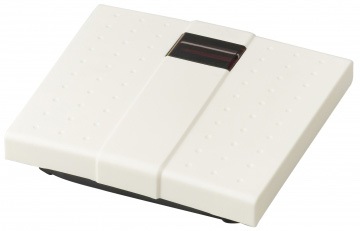My year in review.
Over the last few months, I’ve had a lot of time to think about the past 29 years of my life with the man who became my husband six years ago. The same man who rather suddenly told me he wanted a divorce in June, when I was 1200 miles away at my summer job.
I’ve blogged about our life together as things happened in bits and pieces throughout the 9-year history of this blog. I’ve also written blog posts that look back on certain aspects of our relationship and marriage; you can easily find them by clicking the divorce tag. Writing about this has been cathartic for me, helping me to organize my thoughts and get them out of my head in a way that makes so much sense.
It’s unfortunate that I need to write about this so much. I’d much rather write about other more interesting things like flying and travel and cooking. Sadly, this has taken a front row seat in my life, so it’s up front in my blog, too. I know that more than a few people have found what I’ve written helpful to them as they deal with their own divorce and recovery.
Today I want to focus on the damage I suffered to my personal self-esteem as my marriage started to deteriorate and how I’ve lately been able to overcome that and emerge a better, healthier, and stronger woman.
The Decline of a Marriage
Looking back in the 20-20 vision of hindsight, I think the problem started when I returned from my summer job in October 2011.
The month before, in September when my cherry contracts were finally over, my husband had flown out to Washington to spend about a week with me on a little vacation. We loaded up the truck and headed out on a trip around the Olympic Peninsula that included a day trip to Victoria, BC in Canada. We had a great time together — at least it seemed that way to me — and got to tour some of Washington’s most beautiful coastal and mountain areas with unbelievably good weather. I blogged about the first three days of the trip here, here, and here. As we finished that trip, I thought things were pretty darn good with our marriage. It was great to do a trip together — we’d had so few vacations in the previous few years due to his limited vacation time — and I looked forward to coming home and spending more time with him.
He’d been living 4 days a week in his Phoenix condo, which was much closer to work than our Wickenburg house. He’d been doing this for years — since he bought the condo — and had a roommate there to help keep his expenses down. I knew the roommate pretty well — he and his wife had been friends for years. His wife lived in their Williams area home and worked in Flagstaff. I liked her a lot; I thought (at least then) that she was a genuinely good person. But the roommate, who worked for the same company as my husband, was sometimes hostile toward me. As a result, I felt uncomfortable spending time at the condo with my husband when the roommate was around. So I pretty much stayed in Wickenburg during the week with occasional trips to Phoenix on weekends when it was less likely for the roommate to be around.
But in the late summer of 2011, my husband had asked the roommate to find another place to live. With the roommate gone, I’d move my office to the condo and spend more time with my husband. I could work in the condo while he went to his job in north Phoenix. We’d be together, without a third party hanging around.
So the roommate moved out and I moved my office into his bedroom. We also got a new king-sized bed and set up a small bed for guest in my office. I bought new blinds and fixed the place up a bit. Like my husband, I shifted many of my personal possessions to this new (for me) home and began living there during the week.
Because I’d been away all summer, I didn’t immediately pick up on the vibes coming out of my husband. But looking back on it now, I realize that he was distracted and distant almost from the very beginning of my time living in the condo. When I finally caught on, I assumed it had to do with his job. The company wasn’t doing well in the economy and although my husband usually didn’t have much trouble selling product, customer purse strings were tightening and my husband’s boss wasn’t being flexible enough on pricing. They were losing sales — he was losing sales. This not only affected his commission income, but it was making his boss unreasonable.
As the months ticked by, the stories my husband brought home from work became more and more disturbing. He was in a frustrating work environment, sharing a tiny office with a loud co-worker. His boss wanted to see him at his desk but also wanted him out in the field talking to customers. His boss was attempting to micro-manage everyone, throwing my husband — an experienced sales guy — off his game with idiotic instructions and demands. People were quitting or getting fired. My husband was stressed out and was bringing this stress home with him.
There was nothing I could do to help him. Instead, I watched him become more and more distant from me. Our time spent together was limited to going out to dinner, going to a movie, or watching TV. We seldom had sex; he seemed more interested in watching TV than coming to bed with me. When we went home to Wickenburg on weekends, he seemed more interested in doing chores around the house or catching up on DVRed episodes of his favorite car show than spending time with me. I couldn’t work in Wickenburg, so when I had work to do, I began staying in Phoenix over the weekend to work.
All through this time, he never told me what was bothering him. We never communicated about what was important in our lives together. When he didn’t like something I did or said, he’d fix me with a disapproving glance, letting me feel the unspoken anger that lurked within him. Spending time with him was becoming difficult, if not downright painful.
A Self-Esteem Death Spiral
Again, I didn’t realize it as it was happening, but when my husband and I started drifting apart, I began taking less of an interest in myself and my appearance. I’d always preferred loose-fitting clothes, which were more comfortable than more fashionable and feminine clothes I could have been wearing. But there seemed no reason to dress up or put on makeup — my husband obviously didn’t care so why should I?
At the same time, all our eating out and my lunch breaks spent walking Charlie the Dog to the nearby shops and restaurants started going to my waist. I started to gain weight. The loose-fitting clothes hid it, making me just another shapeless middle-aged woman.
I began noticing a certain lack of attention or even respect from sales clerks — especially younger ones — when I went shopping. I’d sometimes be ignored as I waited for service. More attractive people got more attention, smiles, polite responses. I began feeling like a second-class citizen.
Worse yet, my short hair and lack of makeup sometimes caused me to be mistaken for a man. The first few times this happened in front of my husband, he corrected the waiter or sales clerk or whoever very sharply. Once or twice, we even walked out of a restaurant. But after a while and too many times of this happening, he stopped correcting them. It must have made him feel like crap to be with a woman that some people thought was a man.
It made me feel like crap, too. But rather than do something about it, I just made it worse. I kept eating. I continued to gain weight. Few of my normal clothes fit me. I had nothing feminine in my closet to wear. When I looked in the mirror, I saw the overweight, middle-aged, possibly lesbian woman that everyone else was seeing. I hated what I saw. But I didn’t do a damn thing about it. As our relationship continued to decline, my self-esteem declined with it. Even when I stood on the scale one day and read 198 pounds, and my doctor prescribed three blood pressure medications, I continued on what would likely have been a self-destructive course.
I think that if my husband and I had talked about our situation and come up with some sort of plan to make it better, my problem might have begun to resolve itself sooner. At least we would have had a chance of saving the marriage along with my self-esteem. But because we never had the talk the marriage counsellor we saw said we needed, the marriage was never saved. Lack of communication is what ultimately killed our marriage; what came after I left for this summer’s work were just nails in the coffin.
The Diet and Divorce
In May 2012, once I’d relocated back to Washington for the summer and could bury myself in the flying work I enjoyed, I started feeling a little better. Other things that helped were:
- Being among friends. After four summers in Washington, I had far more friends there than I had in Wickenburg or Phoenix. In Washington, I had a social life that included dinner out with friends, wine tasting, and socializing.
- Being away from my husband’s dismal moods. It was a relief to be able to do what I wanted without having to worry about seeing his disapproving glare.
- Being in a simpler living situation. Living in an RV isn’t ideal, but with just one person calling all the shots, it isn’t bad.
Meanwhile my husband got a new and better job that would allow him to work from home and travel. We were both excited about this. I think that if he’d gotten the job about three months earlier, I wouldn’t be using a divorce tag on my posts. I think the job could have saved our marriage. But the job came just after I left for the season. And although we talked on the phone about him coming to Washington with the dog and spending the summer with me and even traveling together, none of that ever happened.
I started the diet in mid June. My friend Mike and his wife Cheryl had lost 80 and 70 pounds respectively. My friend Jim, another pilot, jumped on board about a week before I did. It was Medifast and I already blogged about it and its results.
My husband began the divorce discussion on June 30, my birthday. I was shocked and wanted to meet with him in person to discuss it further. We met on July 12 in Cle Elum. By that time, I’d lost about 10 pounds.
Our meeting was charged with emotion. It was very civil. I did a lot of crying. I flew him out to Malaga in the helicopter to show him a wonderful piece of land where I thought we could reboot our lives together. He was not interested. The decision was made. He cried with me a little at lunch before we parted. And he also lied to me, assuring me that there was no other woman.
The emotional roller coaster I was on this summer isn’t worth recounting here. Reading my divorce-tagged posts should give you an idea of what I was experiencing and feeling. Until I found out about the other woman in August, I thought we still had a chance together — so did so many of our friends and family members — especially the ones he kept assuring that he still loved me. It was part of what motivated me to stay on the diet and keep losing weight.
Once I found out about the lies, I became doubly motivated. And as the fat fell off my body, my self-esteem began to come back.
Yes, it’s true — my husband wants to sleep with someone else. Someone who just happened to come along and tempt him when he was weak and needed someone. That should make me feel like crap. But it doesn’t. It makes me feel sorry for him and his weakness. It makes me realize that a strong woman shouldn’t be married to a weak man. It makes me realize that I can do so much better — and I should.
When I came home early and unexpectedly on September 15 and jumped the few hurdles he’d set to keep me out of my home and hangar, I was a full 40 pounds lighter than when I’d left for Washington on May 1. As I blogged earlier this week, I went “shopping” in my own closet and managed to fit into clothes I haven’t worn since I was in my 30s. And I look good in them. Another boost to my self-esteem.
One afternoon, I went to the Clinque counter in Macy’s and sat down for a makeup consultation. She made up my face in the “natural” style I prefer, explaining how each of the products would help my skin stay young or make me look better. I spent $200 on skin cremes and cosmetics and now use them daily. Yes — I wear makeup every day now. And I’m seeing a real difference in my skin.
But the best part was driving home from Macy’s in my Honda S2000 with the top down, when a guy in a pickup truck beside me at a light rolled down his window and called, “You look cute in that car!” Another boost to my self-esteem.
The other day, after my first court appearance for the divorce, I stopped off at the Arizona Mills mall. I needed new undergarments — everything I owned was too big. I went into Victoria’s Secret and got a professional bra fitting. (The sales woman told me my current bra was a “granny bra.” Oops.) I bought two new bras that make quite a difference in my figure — especially with the tank tops that have become a staple in my wardrobe. Let’s just say that only a blind person could mistake me for a man now. Another boost to my self-esteem.
At 51 years old, I’m not only turning heads, but I’m getting the respect and attention I deserve. My self-esteem has been repaired and is thriving.
And it’s not just self-esteem. It’s my health, too. I don’t just look good, I feel good. More energy, better stamina. Even more sex drive — which is frustrating and a shame since I have no one to share it with. I think about how good I feel now and I can’t believe I let myself go so badly. I encourage everyone reading this to evaluate their physical situation and if it’s not perfect, do something about it now.
(And to you “big and beautiful ladies” who think the extra pounds just make you more beautiful, you’re only fooling yourself. Sorry. I’ve been there and back and I know.)
I’m proud to say that my recovery from the brink took less than four months.
My GlamourShots photo session is today. I can’t wait to share the results!
My Poor Husband
Despite the incredible frustration and pain he’s been causing me almost every day for the past year or so, I still love my husband. I always will. The good memories from twenty-nine years together simply can’t be washed away.
I think he’s going through some deep psychological problems that were likely fueled by age, his unsatisfying work situation, his deteriorating relationship with me, and the promises offered by the woman he chose to replace me. I know this because I know him and how he thinks. I know that deep down inside, he’s a good person, one who is probably feeling a lot of guilt about how he’s hurting me and the people who care about both of us — people like my mother, and my stepfather, who he also lied to.
My husband’s irrational behavior over the past year or so — ramped up since I left home in May for work — is likely a textbook study of male mid-life crisis. His crisis came late in life (mine began in 2006 when I was 45) and I’m so sorry he didn’t turn to me for help. Instead, he’s found other people to help him justify his behavior toward me, to ease his guilty conscience and to support his idea that I’m some sort of evil witch who is out to ruin his life. I suspect he’ll snap out of it one day, and I hope that happens before too much more emotional damage is done.



 It was a real shop-till-you-drop experience. I bought 9 long-sleeved t-shirts, 2 short-sleeved t-shirts, 2 lace camisoles, 3 tank tops, 3 sweaters, 2 pairs of Levis blue jeans, and a belt. I also bought 2 pairs of shoes — one of which I put on in the store and threw away what I’d been wearing. The sales made all this possible. With sale prices and two coupons, I spent less than $350 and got quality merchandise from stores like Eddie Bauer, Bass Shoes, Levis, and Tommy Hilfiger.
It was a real shop-till-you-drop experience. I bought 9 long-sleeved t-shirts, 2 short-sleeved t-shirts, 2 lace camisoles, 3 tank tops, 3 sweaters, 2 pairs of Levis blue jeans, and a belt. I also bought 2 pairs of shoes — one of which I put on in the store and threw away what I’d been wearing. The sales made all this possible. With sale prices and two coupons, I spent less than $350 and got quality merchandise from stores like Eddie Bauer, Bass Shoes, Levis, and Tommy Hilfiger.



